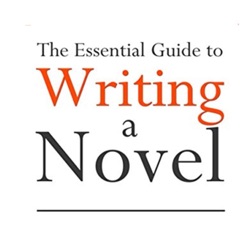Avsnitt
-
Sometimes the strongest writing technique isn't the strongest in our story. Every writing rule has exceptions, and here's a discussion on when to make exceptions. Also, how to create a strong title for our novel and short story.
Support the show
-
Saknas det avsnitt?
-
Having readers fall in love with our character is so important, and making our hero an underdog is a good way to do it. Here are thoughts on underdog characters. Also, I'll read a few character descriptions from master story-tellers that may make us stronger writers.
Support the show
-
Our story should be like a state fair: one thing after another. Here are some ideas on state fair plotting. Plus: settings shouldn't be inert locations in our novel or short story but rather should work for our story. Here's how to get the most from our settings. Also: my experiment with AI proofreading.
Support the show
-
Readers want five things in a story, three of which are right in the beginning. Here's a discussion of how to deliver those five things. Plus, a character's thoughts are the least interesting aspect of a story. How can we show what a character is thinking without entering her mind?
Support the show
-
Best-selling writers disagree on the importance of a theme in stories. Here are thoughts on whether we should present a theme in our novel or short story. And famous authors on their writing discipline. Plus, mixing genres when telling an agent or publisher about our novel.
Support the show
-
Putting a sidekick into our story adds many benefits, a main one being that readers love sidekicks. Here are some techniques for creating a sidekick for our novel or short story. Also, a list of catchy, memorable novel titles. And a big question: how do bad novels get published?
Support the show
-
Remember the fabulous worlds that fantasy, sci fi, and historical writers create for us readers? How do they do that? What works so well? I'll talk about world-building, not just for those novels but for all genres. And also: more on the critical craft of character description.
Support the show
-
Many readers only give a story ten or twenty pages before putting it aside to look for something more interesting. A fast start is the best way to maintain the reader's interest. Here's how to write the fast start. Also, how Alice Munro worked, and Richard Ford's rules of writing.
Support the show
-
Edna Ferber was a master of character description. Here are a few of her characters, and maybe we can pick up some of her skill. Also, how many words a day do famous writers write, and how many words a day should we write? And showing pain, as opposed to telling about pain.
Support the show
-
Charlotte Bronte's novel Jane Eyre is a classic of western literature, a novel that endures and still hugely entertains because . . . it's so great. (How that for being profound?) Charlotte Bronte offers an important lesson for today's writers, and I'll talk about her lesson in this episode. Plus, the trouble with prologues.
Support the show
-
Why are some novels so good? One of the reasons is that the author is a master at setting descriptions. How did Charlotte Bronte and Edna Ferber make their settings magical? We'll talk about their techniques here. Also, strong verbs versus weak verbs: how and why to choose the stronger action word.
Support the show
-
Good stories are filled with surprises for the reader. There are right and wrong ways for us writers to deliver surprises, and I'll talk about them here. Also, the importance of a tie-up-later list.
Support the show
-
What do George Orwell, Sara Gruen, Jean Shepherd, and John Steinbeck have in common? Many things but foremost among them is their expert use of details that take readers away, that lift us readers out of our chairs and transport us to their places and times. Here are thoughts on their use of details. Also, we should avoid cliches like the plague.
Support the show
-
Here is a magical way to end a scene and to begin another without worrying about travel and time between scenes. Also: avoiding dangling modifiers. And how Bernard Malamud worked, and Helen Dunmore's rules of writing.
Support the show
-
What should we do if we must--absolutely must--have an element in our story that might not be fully entertaining and engaging? 1) Make sure it's important and 2) make it short. Here are thoughts about this critical technique. Also, details in our descriptions are important, but which should we use and which should we leave out?
Support the show
-
We writers can use lovely phrases and perceptive observations when describing our character in our story, and yet the reader may still quickly forget the character. Here's how to make a character stick in the reader's mind. Also, are you a born writer? Maybe so. Here's why you might be.
Support the show
- Visa fler


